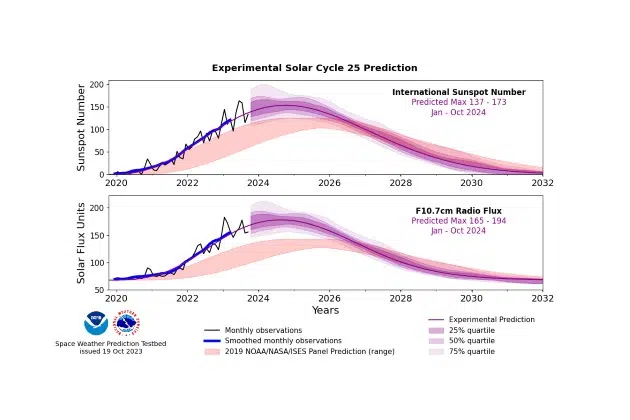(KNSI) – The National Oceanic and Atmospheric Administration says the current solar cycle will be more intense than previously thought.
Sun activity is expected to peak next year between January and October. NOAA says as many as 173 sunspots would be created each month during that period. While the peak hasn’t arrived yet, the pattern has been on the rise since 2020. Routine storms can be expected through 2027, when they begin to tail off. Cycles are typically about 11 years in length.
The agency will provide monthly updates as solar storms can have significant impacts here on Earth. Radiation can damage or destroy satellites and electronics. NOAA says in a press release that a minor geomagnetic storm caused 38 of 49 SpaceX Starlink satellites to malfunction in February 2022. Over three-quarters of the batch settled below their intended orbit.
It also has the chance to lead to incredible Northern Lights displays. Solar storms deliver more energy to Earth, which leads to warmer temperatures. The magnitude of the temperature change is still debated by scientists, though. Figures range from only 0.1 degrees Celsius to nearly 1.5 degrees (about 2.7 degrees Fahrenheit).
NOAA says that during the peak, the sun’s outer edge, known as the corona, will be easily visible. This condition will coincide with the solar eclipse scheduled for next April, making viewing especially awe-inspiring.
We are in Solar Cycle 25. Number 24 was historically weak, peaking at about 115 sunspots per month. While the 173 expected this time around is above initial projections, it is lower than normal. The average cycle reaches 179.
___
Copyright 2023 Leighton Enterprises, Inc. All rights reserved. This material may not be broadcast, published, redistributed, or rewritten, in any way without consent.








